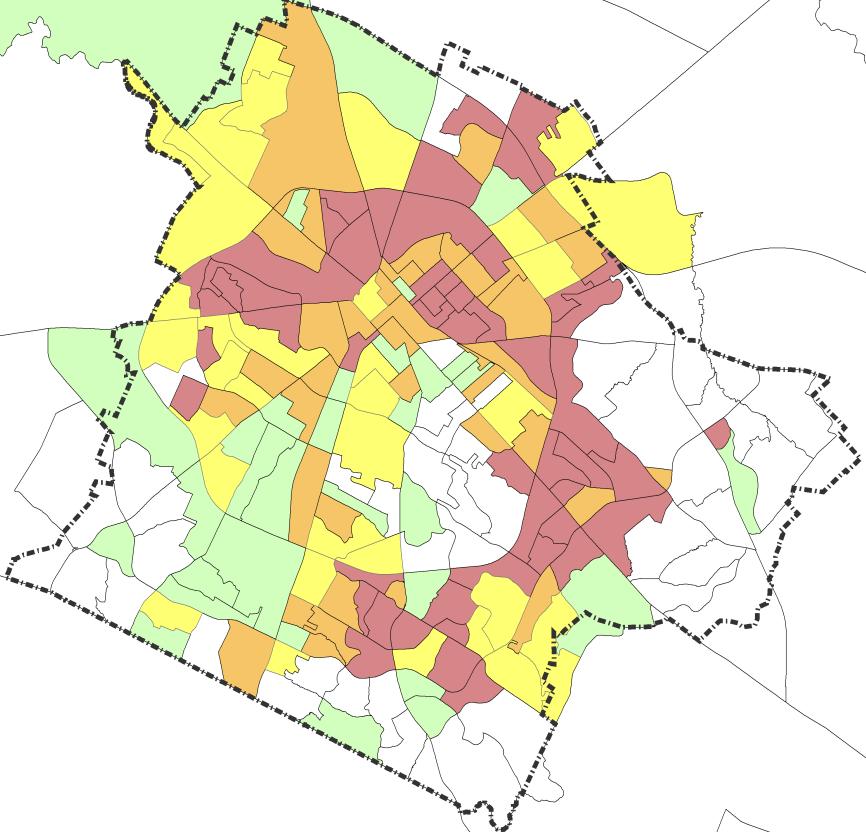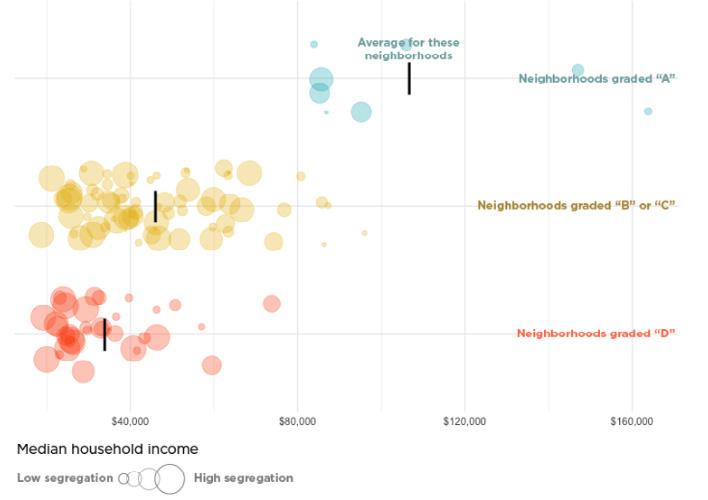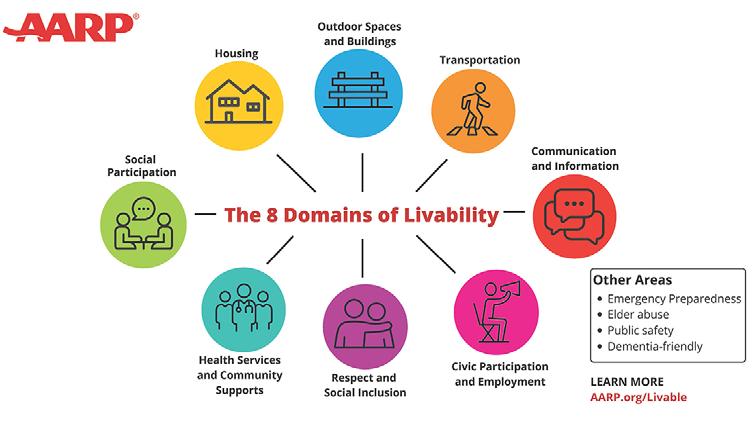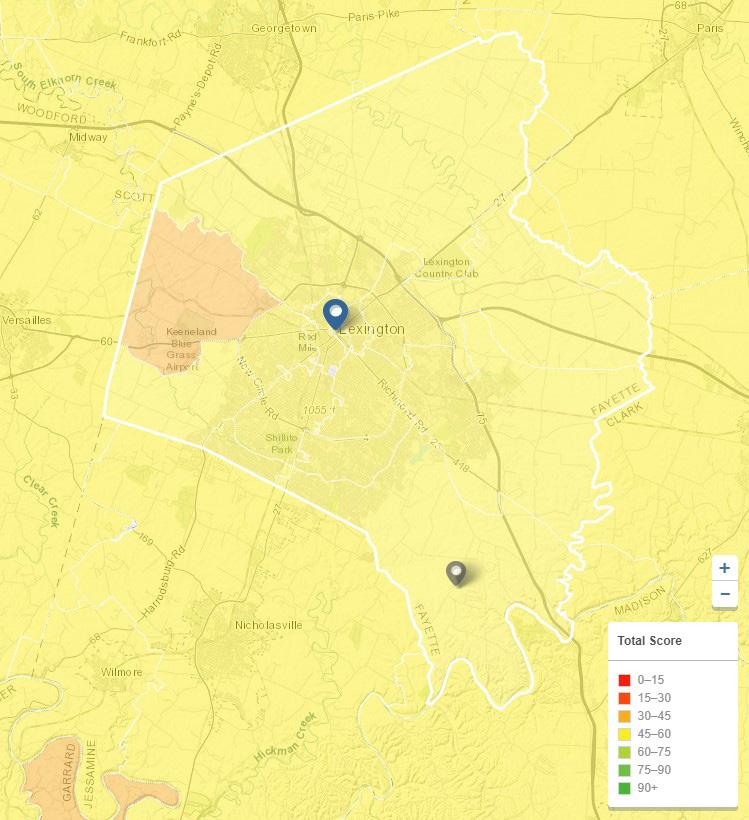
4 minute read
Equity in Planning
Equity
While ‘equality’ means ‘sameness’, EQUITY means FAIR treatment, fair access, fair opportunity and fair advancement for all people. Equity is an approach that ensures everyone is supported in their personal and professional development. Unlike equality, equity does not aim to treat all individuals in the exact same way. Instead, equity recognizes that advantages and barriers exist, and that as a result, different people have different needs.
Systemic Racism and Segregation Policies in
Planning
At its inception, modern urban planning focused on public health, taking steps like separating industrial and residential uses. However, planners quickly began using policy as a tool for segregation.

• Race-based zoning ordinances
• Residential districts banning multi-family housing types (essentially excluding renters)
• Redlining (the systematic denial of various services by federal, state and local governments, essentially blocking off certain neighborhoods from receiving benefits such as home loans and insurance).
• Discriminatory investment in schools, amenities, and infrastructure
Sources: Deep Dive: Redlining, Racism and Urban Planning, Emi Okikawa and Tim Frank, July 21, 2021
Historic Inequity in Lexington
Similar to other communities, Lexington has a long history of racism, violence, and discrimination. Racial equality continued to elude African Americans in Lexington-Fayette County. A report titled: “A Study of Economic and Cultural Activities as They Relate to Minority People in Lexington and Fayette County, Kentucky in 1966” found that 98% of the city’s non-white citizens lived in the central area of the city, and that 40% of this housing was substandard. In 1978, the United States Department of Housing and Urban Development revealed housing biases involving black and white couples with similar incomes, education and other personal factors.
The national study of 40 cities ranked Lexington fourth among those with the worst problem in housing discrimination. Although Lexington updated its housing ordinance the next year to equalize housing opportunities for all citizens, a Kentucky Human Rights Commission study showed apartment complexes were still segregated in 1981
Source: Mayor’s Commission for Racial Justice & Equality, 2020
Housing Inequity

that minorities are most heavily represented in jurisdictions with the smallest percentage of single-family-only zoning
Source: Menendian, S., Gambhir, S., French, K., & Gailes, A. (2020, October 7). Single-family zoning in the San Francisco Bay Area. SingleFamily Zoning in the San Francisco Bay Area | Othering & Belonging Institute www.belonging.berkeley.edu

Neighborhoods in Transition

Maps of Vulnerabilities to Displacement
The goal was to establish maps to identify areas in Lexington that are experiencing transition, and which are most vulnerable to involuntary displacement.


The Task Force identified four attributes that contribute to a neighborhood’s vulnerability to involuntary displacement:
Low mean home sale price Fayette County’s mean SF-residential sales price is $201k. This takes the lowest quartile of sales, being anything under $113k.
Low owner-occupancy rate Fayette County’s owner-occupancy rate is 77%. This study highlights the top 10 block groups with the lowest owneroccupancy. High minority population (non-white)
The percentage of the population within these block groups that are non-white ranges between 34-93%.
Segregation and Inequality


Foreclosures 2008-2018
Sources: Townsley, J., Andres, U. M., &, Nowlin, M. (2021, June 24). The lasting impacts of segregation and redlining.

Social Needs and Conditions Index

The act of creating environments in which people feel like they can be their authentic selves. It means everyone feels valued, respected, and appreciated for their unique identities, even when they’re different from others. Inclusion outcomes are met when your policies and programs are truly inviting to all. And extends to the degree in which diverse individuals are able to participate in decision-making processes and development opportunities.
Immigrants Aging Population
Top 10 foreign languages spoken/represented in Lexington
• Spanish Swahili
• Arabic Nepali
• Japanese French
• Mandarin Kinyarwanda
• Korean Portuguese
Lexington’s International Population
Global Lex is a multilingual, multidisciplinary center where local residents and our foreign-born population obtain information, and access programs and services.
• Based on 2020 FCPS ELL student enrollment, local estimates are that 23% of the total Lexington population are foreign language speakers Approximately 196 languages from all parts of the world are spoken in Lexington
• Lexington is following a national trend towards Asian immigration and foreign language growth
1,113

Source: Stacker. (2021, October 3). Biggest sources of immigrants to Lexington. www.Stacker.com
2019 Statewide Immigration Statistics
Where are they immigrating from?
Source: State demographics data KY. Migration Policy Institute. www migrationpolicy.org. (2021, November 1).
People with Disabilities
• Therapeutic classes
Compassionate Cities Designation


• Waste management exemption for those that can’t get their trash tot he street
• Remodeling for Access and Mobility Program (RAMP)
Reimagining Home
• Curb cuts and sidewalk connection program
Lextran bus fleet is 100% lift/ramp equipped
Lextran ADA paratransit
• Lextran reduced cost passes
Timing of crosswalks

• Shared use trails - Town Branch Commons, Legacy, etc.
Pedestrian wayfinding
• Residential handicapped parking spaces
Caregiver resources and support groups
• Proposed satellite center for seniors and people with disabilities at Shilito Park (FY 2023)
Things Lexington scored well on (top third across the country)
Multi-family housing availability
• Availability of subsidized housing

Proximity to destinations (grocery stores, parks
• Compact neighborhoods Transportation costs
• Access to health care
Opportunity for civic engagement
• Job opportunities
Things Lexington scored average on (middle third across the country)
Housing costs and cost burden
• Mixed-use neighborhoods Neighborhood quality and vacancy rates
• Obesity Quality of health care
• Social engagement
High school graduation rate
• Multi-generational communities
Things Lexington scored poorly on (lower third across the country)
Personal safety crime rate
• Convenient transportation options
Accessible station and vehicle designs

• Higher than
Source: AARP livability index great neighborhoods for all ages. AARP. (2018 June). www.livabilityindex.aarp.org/

1 of 2 local governments with aging services in Kentucky 4 citywide locations for senior adult programs
Source: Age Friendly Lexington A Livable Community Age Friendly Elxington www.agefriendlylexington.org
TOP 10 CENSUS BLOCK GROUPS:
Sexual Orientation & Gender Identity
106/100 w/flex bonus points
50,000 Attendees annually

